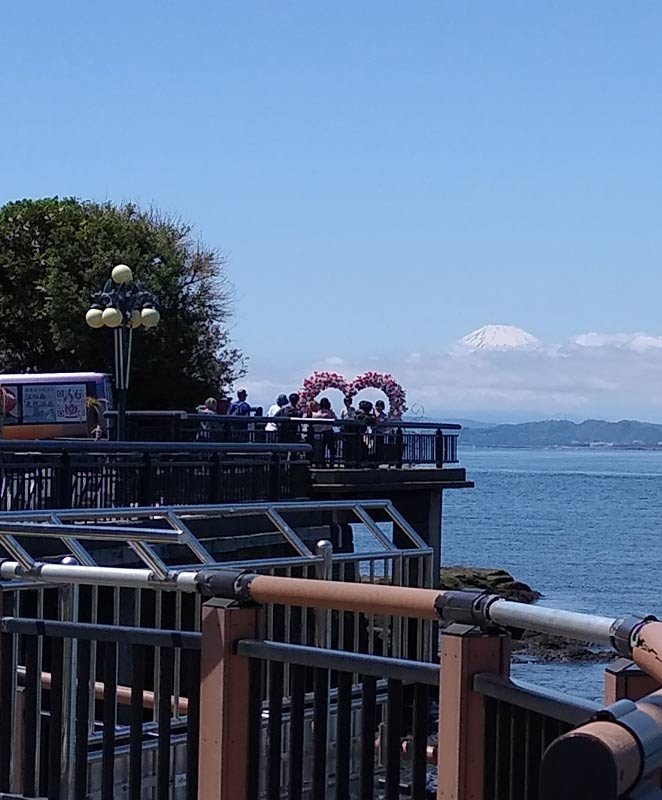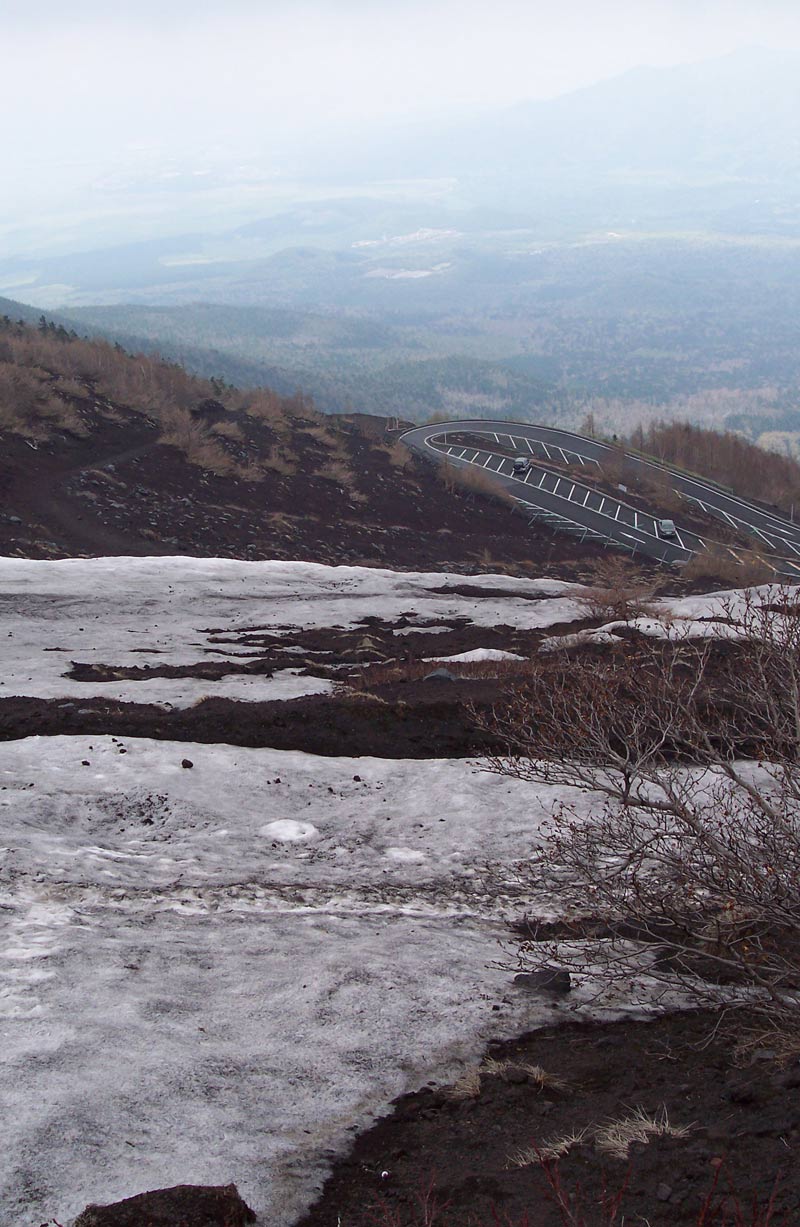Japan’s Mount Fuji, known as Fuji-san (富士山), is one of the most famous mountains in the world notable for its distinctive shape and significant geological features.
Fuji's striking physical presence, combined with its geological complexity and geographical prominence, makes it a fascinating natural landmark and a cherished symbol of Japan.
The country's highest and most iconic mountain holds great cultural and spiritual significance in Japan and many make the pilgrimage to climb to the summit, seeing it as an accomplishment for both body and soul.
Historical and modern influence
Throughout Japanese history, Mount Fuji has been featured in many historical records and stories. Its first recorded ascent was by a monk in 663 AD, marking its long-standing religious significance.
Today, Mount Fuji continues to be a beloved icon, appearing in everything from corporate logos to tourism campaigns. It holds a special place in the hearts of Japanese people and visitors alike, symbolizing peace and natural beauty.
Throughout the year, many festivals are held in the area to celebrate Mount Fuji which often feature traditional music, dance and parades. Some of these festivals, especially those held in summer, include spectacular fireworks displays and light shows which illuminate the mountain and create a magical atmosphere.
Natural beauty

The sight of Fuji-san 'floating' above the clouds is a stunning natural phenomenon that has captured the imagination of many. This view, known as 'Fuji above the clouds', is often considered a sublime and almost otherworldly experience.
In the region around Fuji-san there are five beautiful lakes, known as Fujigoko. These are Lake Kawaguchi, Lake Motosu, Lake Sai, Lake Shoji and Lake Yamanaka. This region is filled with popular recreational and tourist spots including forests, waterfalls, caves and, of course, many places where you can observe stunning views of the mountain.
In 2013, Mount Fuji was designated a UNESCO World Heritage Site, recognizing not only the mountain's natural beauty but also its cultural heritage.
Where is Mount Fuji located?
Mount Fuji is located on Japan’s Honshu Island, about 100 kilometres southwest of Tokyo. It straddles the boundary between Shizuoka and Yamanashi Prefectures.
Physical and geological features
Mount Fuji stands at 3,776 metres high (12,389 feet) and is the tallest mountain in Japan. It is renowned for its almost perfect volcanic cone shape, formed by thousands of years of accumulated lava flows and volcanic ash, making it a classic example of a stratovolcano.
Today, Fuji is considered a dormant volcano. The last time it erupted was over 300 years ago in the New Year period of 1707 to 1708. The Japanese government and various geological agencies closely monitor the area for seismic activity and other signs of potential eruptions. There are detailed disaster preparedness plans in place for a potential eruption including evacuation routes, emergency shelters and public information campaigns.
Because of its altitude, the peak is snow-covered for about five months of the year, usually from November to May, giving it an amazing scenic beauty.

The climate at the summit of Mount Fuji is cold, with temperatures often below freezing even in summer. The average temperature at the summit in July, for example, is around -5°C (23°F). Because of these cold conditions and the often unpredictable weather, the climbing season is generally limited to July and August when conditions are more favourable.
The Yoshida Trail
The mountain is accessible via several routes and, with paved roads and convenient stopping places you can reach the 5th Station, at an elevation of about 2,300 meters (7,546 feet), without too much difficulty.
From here, The Yoshida Trail provides a relatively accessible and well-supported route to the top of Mount Fuji and offers an enriching experience for both novice and experienced climbers.
It's a popular starting point for those set on climbing to the summit.
The trail is well-marked and maintained with numerous facilities along the way, including rest huts, first-aid stations and toilets. It is divided into several stages, with each station offering a place to rest and acclimatise to the altitude. Even so, you should be in good physical condition and plan your climb carefully.
There is a voluntary climbing fee, used to maintain the trails and facilities, and paying this fee at the start of the climb helps support the preservation of Mount Fuji.
Following the Yoshida Trail, it is approximately six kilometres (3.7 miles) from the 5th Station to the summit and usually takes between 5 to 7 hours depending on one's pace and the weather conditions. The descent takes about 3 to 5 hours.
Although the trail starts with a relatively gentle incline, it becomes steeper and rockier as climbers approach the summit. The final sections require careful navigation over volcanic rocks.
Given the rapid gain in altitude, climbers often experience symptoms of altitude sickness. It is recommended to take regular breaks, stay hydrated and consider spending some time at the 5th Station to acclimatise before starting the ascent.
Reaching the summit
As you can imagine, following the Yoshida Trail offers stunning views of the surrounding landscape, including the Fuji Five Lakes, surrounding forests and other mountains. As climbers ascend, the panoramic vistas become even more spectacular.
Many climbers choose to start their ascent in the evening to reach the summit in time for the sunrise, an experience known as 'Goraiko'. Watching the sunrise from the top of Mount Fuji must be a breath-taking and memorable experience.
Spiritual and cultural significance
As you can see, the physical features of the mountain make it a challenging and beautiful environment to traverse. However more than this, in Japan Mount Fuji also has a spiritual might that means it has acquired important cultural and religious significance.
To the Shinto religion, Mount Fuji is considered a sacred site and is believed to be the abode of the kami , or spirit, Konohanasakuya-hime, the goddess of Mount Fuji, volcanoes in general and cherry blossom among other things.
For many centuries, pilgrims have climbed Mount Fuji on a spiritual journey to purify themselves and seek blessings. Many Japanese people still make this ascent, considering it an act of devotion.

As most people know, Mount Fuji is a national symbol of Japan. It represents the country's natural beauty, strength and endurance and is often depicted in artworks, poetry and literature.
As such, the mountain has inspired countless artists, most famously Hokusai Katsushika. Hokusai's series of woodblock prints 'Thirty-Six Views of Mount Fuji' captures the mountain from various perspectives and seasons. These works, which include ‘The Great Wave off Kanagawa’ possibly one of the most famous paintings in the world, have become iconic representations of Japanese art.
Mount Fuji's presence is deeply woven into the fabric of Japanese life, symbolizing a blend of natural beauty, spiritual depth and cultural richness. The classic view of Mount Fuji appearing to float above the clouds, encapsulates this profound significance and is a testament to the mountain's enduring allure. If you visit Japan, I hope you can experience the view of Mount Fuji and appreciate its inspiring image.








